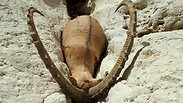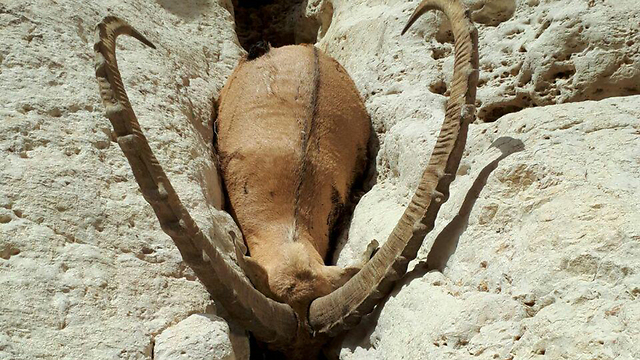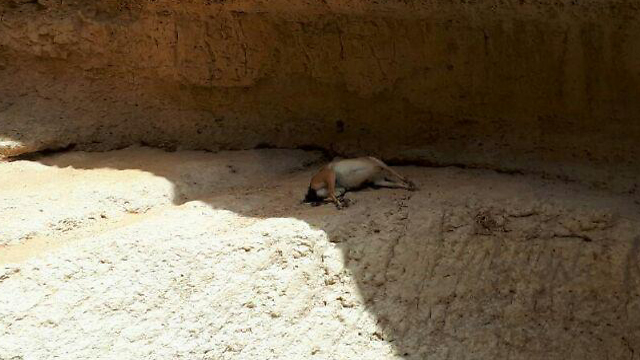

Asalim stream disaster kills third of ibex population
Two weeks have passed since the acid spill in Nahal Ashalim and the ibex population in the area continues to pay the heavy price of the river's pollution—in recent days, two more ibex carcasses have been found in the area, raising the number of ibexes found so far since the disaster to eight.
Following the accidental pollution of the Nahal Ashalim in the Negev, the Israel Nature and Parks Authority (INPA) found two more dead ibexes near the stream. The ibexes, male and female, located on Thursday, raise the total amount of ibexes found since the ecological disaster to eight, out of a herd of 26.
INPA Director Gilad Gabai said, "This is a relatively rare wild animal of great importance to the environment. It is painful and frustrating to see the damage to the ibex and other wildlife in the area. This damage could lead to continued damage to the flora and fauna in the area that will take years to rehabilitate."
In a sad case of irony, the INPA's symbol is the ibex.
The INPA notes that the circumstances of the deaths of the ibexes are still under investigation, but there is a very high probability that these are were due to the damage caused by the leakage and pollution of the stream.
Dr. Assaf Tzuar, an INPA ecologist, noted that, "The ibex is very rare in the Middle East and Israel is one of the last countries to have wild herds of them that are relatively protected from hunting. Nahal Ashalim is of great importance because it is an important pathway that links the Judean ibex population to that of the Negev."
While the INPA is making efforts to minimize the damages of the disaster, it is also preparing to begin the implementation of the Ashalim Stream monitoring program in cooperation with NGO HaMaarag, a research body on behalf of Tel Aviv University which specializes in environmental monitoring and rehabilitation programs.
In the coming week, the INPA will examine the possibility of pouring clean water into some of the river areas in order to examine the effect of the flow on water acidity.
The Nature and Parks Authority's assessment is that the entry of travelers to the area will not be possible in the coming year, even after the winter floods, should there be any.
Earlier this month, the Rotem Amfert acid pool was breached, causing the stream to be polluted, thus killing many of the animals in the area. The Ministry of Environmental Protection opened a criminal investigation against the plant and its parent company, Israel Chemicals.


















